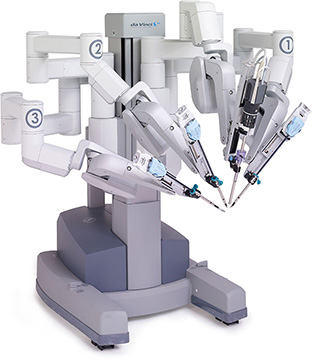“Can The Robot Do Mitral Valve Repair & Coronary Artery Bypass?” Asks Rena
By Adam Pick on June 30, 2013
I just received a great question from Rena about mitral valve repair and coronary artery bypass grafting (also known as CABG). Rena writes to me, “Hi Adam – I’m in for a ‘double doozie’. I have a bad mitral valve (severe regurgitation) and a blocked artery. My cardiologist suggests surgery soon. In looking at the different options, I’m curious to know if the robot can do both mitral valve repair and bypass in one procedure? If so, is it safe or risky?”

To provide Rena an expert response, I contacted Dr. Thomas Molloy, who is the Director of Cardiovascular Surgery at Adventist Medical Center’s Northwest Regional Heart Center in Portland, Oregon. In his response, Dr. Molloy wrote:
Dear Rena,
We can perform both robotic assisted bypass and robotic assisted mitral valve surgery. However, with combined coronary and mitral valve disease, we utilize a “hybrid” approach. This means that we treat the coronary artery disease with percutaneous angioplasty and the mitral valve disease with robotic assisted endoscopic surgery. For many coronary artery lesions (that would be treated with surgical vein grafting coronary angioplasty) results are equivalent, less invasive, and allow us to utilize a robotic approach to mitral valve repair.

Dr. Thomas Molloy – Heart Surgeon
Data is increasingly clear that the robotic approach for the mitral valve is not only less invasive for the patient but leads to higher rates of valve repair vs replacement. Valve repair provides a durable solution to a leaking valve while avoiding the need for anticoagulation and optimizing cardiac function. In our institution, 96% of patients with a leaking mitral valve receive a valve repair rather than replacement versus an average of 55% in the United States today where 87% of mitral valve repair is still performed without robotic assistance. Recovery from surgery is much quicker — with an average length of stay in our institution of 3.1 days vs 6.0 days average in the United States (Society of Thoracic Surgeons Database 2012).
In cases of multi-vessel coronary artery disease, left main coronary artery disease, and proximal LAD disease, the sternotomy approach to combined mitral valve repair and coronary bypass is the safest approach.
Thanks to Rena for her question and a special thanks to Dr. Molloy for sharing his clinical experience and research with our community.
Keep on tickin!
Adam
|
David Buxbaum says on July 4th, 2013 at 3:21 pm |
|
I am 87 years old and just found that I need my aorta valve and 1 artery bi-pass. Sincerely. |
 |
|
David Buxbaum says on July 10th, 2013 at 5:56 pm |
|
Adam, |
 |
|
Janet says on July 12th, 2013 at 10:33 pm |
|
Dear Adam: I was diagnosed with LBBB of my heart and also a minimal regurgitation of my aortic valve and my tricuspid valve. If I ever need valve repair can it be successfully done with the left bundle branch block LBBB? How often should I see my Cardiologist. He asks that I only visit my Internist once a year and if there is a problem/symptoms then to see him. Thanks |
 |











